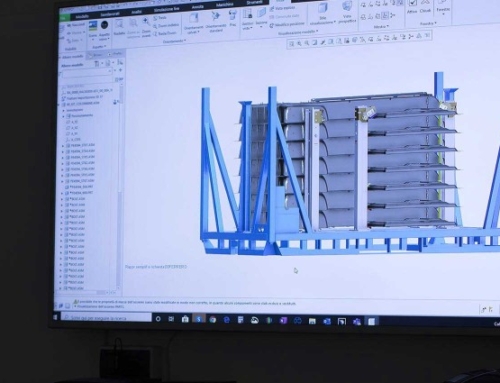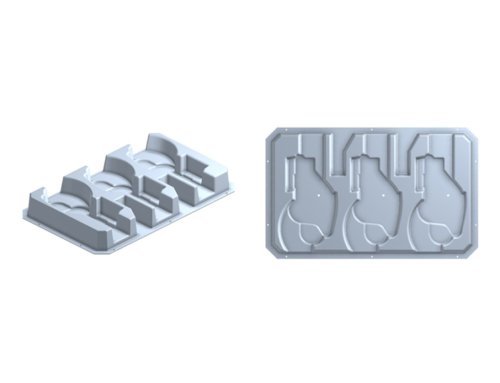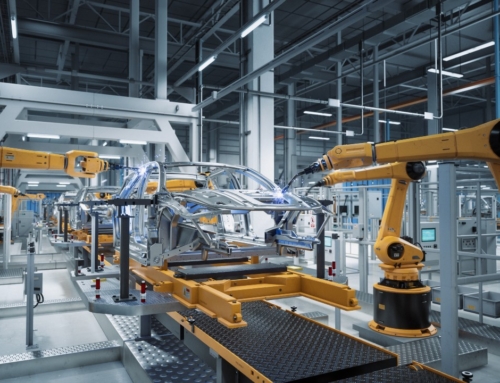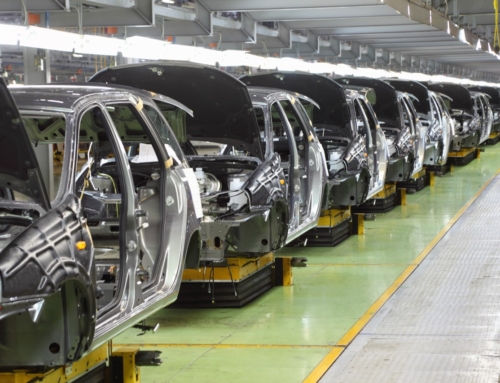Automotive stacker pillars: the advantages for handling car components
All the features and advantages of automotive stacker pillars installed on specific metal racks
In the automotive industry, the handling of car components during the various production phases is a process that requires maximum precision, speed and safety. Automotive stacker pillars installed on specific metal racks are specially designed to optimize and speed up the handling of different types of components, offering robust and safe support and facilitating the automated loading and unloading process.
The use of robots in this context makes it possible to minimize human intervention, thus limiting the risk of errors and accidents. Moreover, the automation of these operations ensures a constant and precise transfer speed, optimizing the workflow and reducing downtime. In the automotive sector, where timeliness and precision are fundamental, the adoption of metal racks with stacker pillars for automatic handling therefore allows not only to increase productivity, but also to improve the safety and quality of the final products, making production processes more efficient.
Let’s see in more detail what are the main advantages of automotive stacker pillars and how they can improve the efficiency and productivity of handling operations.
How do automotive stacker pillars work?
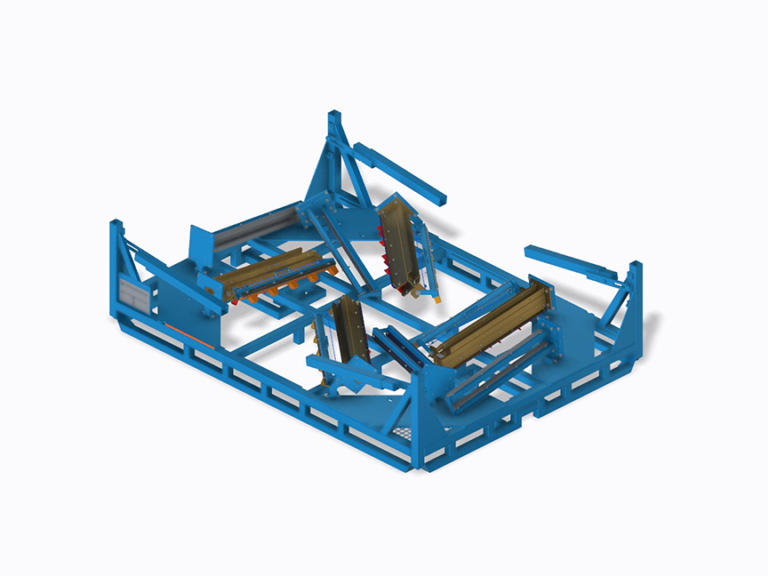
Automotive stacker pillars are automated handling systems installed on specific metal racks that allow components of various sizes and shapes to be handled with precision and speed. Automatic stacker pillars are designed for robot loading and unloading of parts, eliminating the need for manual intervention. Their functioning is based on a system of movable flaps, which are supports designed to stabilize components during handling operations.
When a part needs to be loaded, movable supports automatically arm, ensuring that the component is securely and stably positioned without an operator. This automated process not only reduces loading and unloading time, but also the risk of damage or errors.
Each column consists of a chamber containing the flaps and the mechanism for automatic handling. Inside this chamber, the movable flaps move according to the control system instructions, perfectly synchronizing with the robots that load and unload the components. The system is designed to handle a wide range of automotive components, from the smallest and most delicate to the largest and heaviest, always ensuring precision and safety.
In particular, metal racks with stacker pillars can accommodate car parts such as bonnet, roof, panoramic roof, windscreen ring, batteries and battery covers.
Through the use of advanced technologies, automotive stacker pillars significantly improve operational efficiency, optimizing production times and reducing costs associated with labor and downtime. Their integration with robotic systems and the absence of an operator during the most demanding operations, make these devices an ideal choice for modern production lines, where automation and efficiency are essential.
Advantages of stacker pillars for handling components
Stacker pillars for the handling of components offer a number of significant advantages, allowing to optimize and speed up production processes in the automotive industry. Let’s see in detail their main advantages:
- operational efficiency: stacker pillars allow a fast and precise transfer of components, greatly reducing downtime. The automation of these operations ensures a continuous flow of materials, eliminating delays caused by manual interventions;
- cost reduction: the use of automatic stacker pillars reduces the need for labor, lowering the overall operating costs. In addition, reducing human error and component damage results in lower replacement and repair costs;
- precision and reliability: stacker pillars are designed to operate with extreme precision, ensuring that the components are handled without damage. Their reliability reduces interruptions in the production process, improving the quality of the final product;
- increased safety: these systems minimize human intervention in loading and unloading operations, reducing the risk of accidents and ensuring adequate protection of components. Automated handling of components prevents accidents and ensures a safer working environment;
- versatility: metal racks with stacker pillars are highly versatile and can be designed to adapt to different types of components, of various shapes, weights and sizes. This flexibility makes them ideal for different applications within automotive manufacturing;
- integration with advanced technologies: stacker pillars can be integrated with advanced automation systems, such as industrial robots and automated production lines. This ease of integration further improves the efficiency and productivity of the entire process;
- space optimization: the use of stacker pillars allows a better organization of the space inside factories and warehouses. These devices take up less space than traditional methods of handling, allowing a more efficient arrangement of work areas;
- ease of maintenance: stacker pillars are built with resistant materials and require less maintenance than traditional systems. This results in increased operational availability and lower maintenance costs over the long term.
Ferrero Automotive’s automatic stacker pillars: advanced solutions for the automotive industry
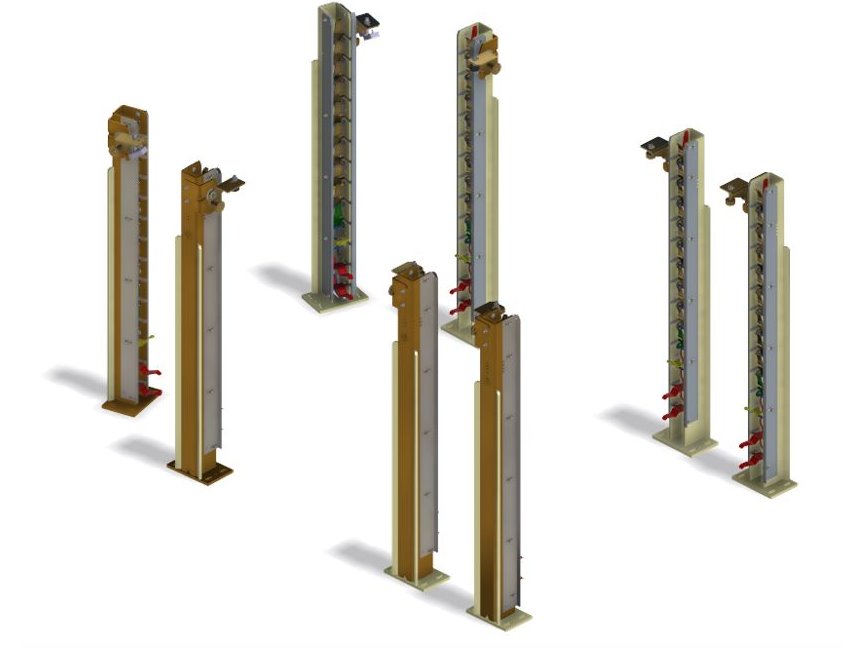 Ferrero Automotive is specialized in the design of automotive metal racks and automatic stacker pillars for the automotive industry, offering advanced solutions that optimize the handling and storage of car components within automated production lines. Ferrero Automotive stacker pillars are designed with meticulous attention to detail, ensuring that each product is made to measure, with specific dimensions and internal configurations, adapted to the needs of each customer and production line.
Ferrero Automotive is specialized in the design of automotive metal racks and automatic stacker pillars for the automotive industry, offering advanced solutions that optimize the handling and storage of car components within automated production lines. Ferrero Automotive stacker pillars are designed with meticulous attention to detail, ensuring that each product is made to measure, with specific dimensions and internal configurations, adapted to the needs of each customer and production line.
Stacker pillars are installed on sturdy metal racks, designed to ensure maximum protection of components during all phases of loading and unloading. The solidity of the structure, combined with the efficiency of the internal stacker pillars, allows to move and transport automotive components in optimal conditions, significantly reducing the risk of damage. This is an essential aspect to ensure that components can be used in production processes and arrive at their destination intact and ready for use.
A further advantage of Ferrero stacker pillars is their ability to be integrated with advanced automation technologies, including industrial robots, thus allowing automated and precise handling of components. Ferrero Automotive’s approach to design includes an initial study phase, the 3D design of metal racks, the realization of the prototypes and the subsequent 3D measurement to ensure the strict respect of the tolerances necessary to allow the robots to move the components.
For more information on automatic stacker pillars or other products and services offered by Ferrero Automotive, contact us!



